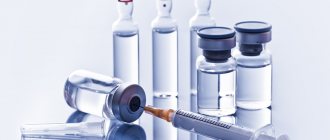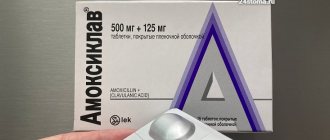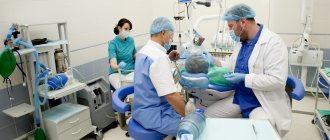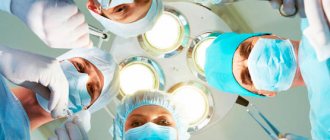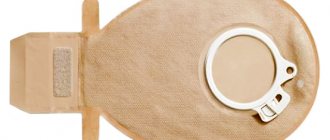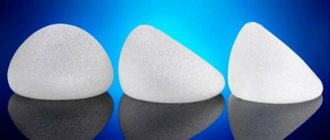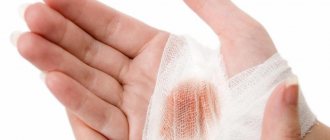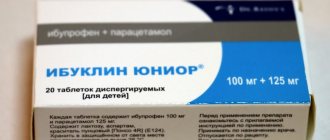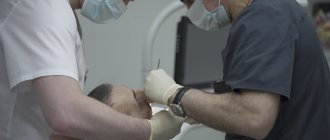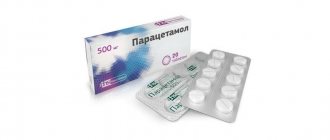Amputation is a complex surgical operation. During the removal of a leg, a large wound surface is created that contains nerves, bone and muscle tissue. The correct amputation technique allows you to minimize painful complications that appear in the postoperative period. Good healing of the stump without adhesions to nerves and bones quickly leads to pain relief. But unfortunately this does not always happen...
Pain relief is a necessary condition for moving on to the next rehabilitation measures. Pain resulting from surgery and tissue injury usually, with appropriate treatment, goes away with healing of the surgical wound.
Top 10 most effective painkillers.
November 17, 2022
7211
4.9
2
Content
- How to choose pain pills
- The best painkillers
- Nonsteroidal anti-inflammatory drugs for pain
- Aspirin Express
- Nurofen Forte
- Dexonal
- Ibuprofen
- Painkillers antispasmodics
- No-Shpa
- Drotaverine
- Spasmonet
- Combination pain relievers
- Pentalgin
- Solpadeine Fast
- Safiston
Analgesics (painkillers) help relieve any pain in the body. You can buy mild painkillers at any pharmacy without a prescription, but strong (narcotic) drugs are sold only by prescription and are prescribed by a doctor, who determines the required dosage.
We have compiled a list of the most effective over-the-counter pain pills based on doctor recommendations and patient reviews. Our rating includes non-steroidal anti-inflammatory drugs, antispasmodics and drugs with combined effects. Analgesics help reduce headaches, dental, muscle, joint and other types of pain. If you decide to buy a painkiller, be sure to pay attention to the popularity of the company that produces the drug, because only well-known pharmaceutical manufacturers carefully monitor the quality and safety of their products.
Phantom and late pain
During amputation, another type of pain may occur that is not associated with tissue injury - phantom pain, which is sometimes difficult to treat with medication. Phantom sensations occur as if in a distant limb (for example, itching in a missing finger; or the ongoing sensation of tearing and crushing tissue that occurred at the time of the accident). The appearance of phantom pain after amputation is often associated with the formation of neuromas (dense, painful, round formations on crossed nerve trunks associated with the growth of nerve tissue).
Our clinic successfully uses the method of treating phantom pain using “mirror” therapy. Sometimes pain in the stump is associated with the formation of ulcers and abrasions during the use of the prosthesis. This situation requires the combined efforts of the surgeon and prosthetist and sometimes requires elective reamputation of the limb. The cause of later pain is mainly negligence in caring for the stump and improper use of prostheses. If, despite following all the rules for using the prosthesis, severe or phantom pain occurs in the stump, you should consult a doctor.
How to choose pain pills
If you decide to buy a painkiller, be sure to read our recommendations.
- The first thing you need to pay attention to when you buy pain pills is the age limit.
This is especially important if you are buying the drug for a child. If you do not follow this rule, there may be health problems due to inappropriate concentration of the active substance. - To relieve, for example, a headache or toothache, choose narrowly targeted drugs.
If pain occurs in different parts of the body, it is better to buy
complex action products. - determine how safe a painkiller is
for your health by studying the list of its contraindications and side effects. The smaller it is, the better, of course. - It is desirable that pain tablets contain an average concentration of the active substance.
If there is little active ingredient, you will have to take the drug more often. If, on the contrary, there is a lot, you need to carefully monitor so as not to overdo it with the dosage. - You don’t need to be guided only by the speed of action of painkillers.
Typically, drugs that quickly relieve pain do not work for long and have a long list of contraindications. - It is also important that pain pills do not contain many active ingredients
- then there will be a minimum of negative reactions. Several components are allowed only in broad-spectrum preparations. - Try to choose a product from a well-known pharmaceutical manufacturer
- this way you will minimize the risks of health problems. - Analgesics are needed only in extreme cases; do not take them at the slightest pain.
Before buying a painkiller, study information about it on the Internet, and most importantly,
consult your doctor.
The best painkillers
Our list contains only the most proven and effective painkillers from well-known manufacturers. This means that the drugs presented have a minimum of side effects and contraindications and are as safe as possible for health. These pain pills are often prescribed by doctors, and patients say they are effective.
Painkillers must be prescribed by a doctor
Photos from open sources
Types of pain
There are different types of pain.
Experts divide all pain into two categories:
- acute, appears suddenly, usually due to injury, does not last long;
- chronic, lasts a long time, occurs as a result of chronic inflammation.
When taking medications for pain, you should consider the type of pain. In some cases, it is prohibited to use painkillers. For example, with acute abdominal pain. This way the disease can be veiled, as a result doctors will not be able to accurately diagnose the disease.
Aspirin Express
These effervescent pain relief tablets contain 500 mg of acetylsalicylic acid. After taking this pill, the headache will go away within 15 minutes. "Aspirin Express" relieves pain, relieves inflammation and works as an antipyretic. The drug is prescribed to patients over 25 years of age, and it is important that the person does not have diseases of the gastrointestinal tract, kidneys or liver. Aspirin Express is prohibited for pregnant and lactating women. For migraines, you need to dissolve two effervescent tablets in a glass of water. 1 tablet – 1 g (you can take no more than 3 g of the drug per day). If you exceed the permissible dosage of these pain pills, side effects such as dizziness, nausea, vomiting, and the development of an allergic reaction are possible. You should not take Aspirin Express for more than three days (without consulting your doctor). The drug has a complex effect, a quick effect, a convenient release form, and no side effects. You can read the contraindications in the instructions.
Aspirin Express
Bayer AG, Germany
Antipyretic, analgesic, anti-inflammatory, antiplatelet agent, NSAID for the symptomatic relief of headache, toothache, sore throat, menstrual pain, muscle and joint pain, back pain;
- increased body temperature during colds and other infectious and inflammatory diseases (in adults and children over 15 years of age). from 5
5.0 1 review
170
- Like
- Write a review
Rehabilitation after surgery
The recovery period after bone grafting and sinus lifting includes many nuances and components. Control visits to the dentist, who will assess the dynamics of rehabilitation and correct it, are important. In addition, the doctor looks at the condition of the graft and its survival rate using instrumental studies.
Recommendations during the recovery period are general and specific to the oral cavity. The general pattern of behavior after surgery includes the following principles:
- Quitting smoking;
- Limiting physical activity;
- Avoidance of air travel;
- Refusal from diving;
- Limiting ultraviolet radiation (going to the solarium is prohibited);
- Coughing and sneezing should be done with caution and with the mouth open;
- It is forbidden to blow your nose;
- You should not drink through a straw, as the pressure in the mouth increases;
- Food should be finely ground and warm, but not hot.
Particular attention is paid to proper oral care during the rehabilitation period. The dentist must instruct the patient in detail about all the nuances of this process:
- The operated area is cleaned using a cotton swab and an antiseptic solution (movements should be gentle, in the form of blotting, not rubbing);
- The teeth are cleaned with a soft toothbrush for several weeks after surgery (the postoperative wound is not affected);
- During the day, the oral cavity is treated with an antiseptic solution (but without rinsing);
- Chewing is carried out only on the healthy side (at least a few weeks after bone grafting).
However, the rehabilitation period after bone grafting and sinus lifting, as with any surgical intervention, involves taking a number of medications. The patient should not prescribe or use medications on his own, as this may cause irreparable harm to his own health.
Nurofen Forte
This pain reliever is the best in its category. Nurofen Forte tablets help with muscle, headache, toothache and joint pain. The drug has very few contraindications due to the content of a small amount of active ingredients. Nurofen Forte is easy to use and has virtually no side effects. Tablets are prescribed from the age of 12; you can take the drug three times a day, one tablet (at equal intervals of 6 hours). You can be treated with Nurofen Forte for no longer than two to three days, then you need to take a week break. Tablets have a wide spectrum of action.
Nurofen Forte
Reckitt Benckiser Healthcare International Ltd, UK
NSAIDs to eliminate: Headache;
migraine; toothache; algodismenorrhea; neuralgia; backache; myalgia; rheumatic pains; fever with influenza and ARVI. from 9
5.0 1 review
594
- Like
- Write a review
Dexonal
Although these pain relief pills are relatively expensive, they make up for this with their effectiveness and safety. This is a drug with a narrow spectrum of action; Dexonal is usually prescribed for pain in the bones and muscles. The tablets have quite a few contraindications, since they contain many components. In addition, the painkiller has strict age restrictions. The drug is prohibited for patients under 18 years of age. Side effects are rare if the required dosage is followed exactly. If the rules for taking Dexonal are not followed, side effects such as disruption of the gastrointestinal tract and cardiovascular system are possible. Painkiller tablets are easy to use, have convenient packaging, are most effective, but are expensive.
Dexonal
Obolenskoye (OBL Pharm), Russia
The drug Dexonal is a non-steroidal anti-inflammatory drug.
It has analgesic, anti-inflammatory and antipyretic effects. The analgesic effect occurs 30 minutes after taking the drug Dexonal orally, the duration of the therapeutic effect reaches 4–6 hours from 220
5.0 6 reviews
944
- Like
- Write a review
Early pain after amputation
Most often they are associated with crude operating technique, lack of treatment of nerve trunks, and accumulation of fluid in the stump area (hematoma, lymphocele). These pains occur immediately after surgery and continue for a long time, gradually changing their character.
Inflammation or suppuration of the stump in the early postoperative period leads to increased temperature, copious purulent discharge, and wound dehiscence. The pain is bursting in nature and is relieved with anti-inflammatory drugs (analgin, diclofenac).
Continued critical stump ischemia. Incorrect choice of amputation level in an area of poor blood circulation leads to the continuation of gangrene. The wound cannot heal, severe ischemic pain occurs. In this situation, only repeated amputation of the leg will help.
Treatment of gangrene
How to avoid limb amputation? 8(800)2221170
Contact your doctor
or we can contact you
Ibuprofen
The active ingredient in these pain pills is ibuprofen, and its low concentration in the drug is excellent for treating pain in those who cannot afford an expensive drug. But the cheapness of Ibuprofen does not mean that it is ineffective. On the contrary, the tablets relieve pain well and begin to act as quickly as possible. Other advantages include minimal likelihood of overdose and ease of use. Ibuprofen is prohibited for children under 6 years of age. It is advisable to take the medicine after consulting a doctor in order to take into account all possible contraindications.
Ibuprofen
OJSC Pharmstandard-Leksredstva, Russia; Slavyanskaya Pharmacy, Russia; Rafarma, Russia; CJSC VERTEX, Russia; PJSC "Biokhimik", Russia; EKOlab, Russia; "Moskhimfarmpreparaty" named after. N. A. Semashko, Russia; Belmedpreparaty, Belarus; PJSC "Biosintez", Russia; Borisov medical plant drugs, Belarus; Sintez OJSC, Russia; JSC "Tatkhimfarmpreparaty", Russia; Novopharm-Biosintez LLC, Ukraine
Symptomatic treatment: - tension headaches and migraines;
- joint, muscle pain, - pain in the back, lower back, radiculitis; - pain when ligaments are damaged; - toothache; - painful menstruation; — febrile conditions during colds, flu; - rheumatoid arthritis, osteoarthritis. NSAIDs are intended for symptomatic therapy, reducing pain and inflammation at the time of use, but do not affect the progression of the disease. from 71
4.5 2 reviews
1535
- Like
- Write a review
Recommendations for patients after surgery
Inpatient rehabilitation phase During the first hours after surgery,
you will wake up in the intensive care unit.
The anesthesiologist and nurse will monitor your body temperature, pulse, blood pressure and other indicators. During surgery, you may have a catheter inserted into your bladder to monitor the amount of urine you produce. You will also have a chest tube connected to a drainage device. During the first hours/days after surgery, your voice may be slightly different from normal, this is normal. You may remain in the recovery room for one or several days, depending on your condition after surgery. Then you will be transferred to the ward in the surgical department where you were originally located. Frequently Asked Questions Will I experience pain after surgery?
You will experience pain after surgery, this is normal.
Your doctor and nurse will ask you frequently about your pain and give you pain medications as needed. If the pain does not go away, tell your doctor or nurse. Pain relief is essential so that you can clear your throat, breathe deeply, and get out of bed and walk. Remember that taking painkillers can lead to constipation (retention of stool for more than 2-3 days). If constipation occurs, consult your doctor. Upon discharge, your doctor will give you recommendations on taking pain medications. What is pleural drainage and why do I need it?
A chest tube is a flexible tube that drains blood, fluid, and air that accumulates in the chest cavity after surgery. This tube is placed between the ribs in the space between the chest and lungs (see Figure 1).
Picture 1
Chest drainage and pleural banking.
The timing of drainage of the pleural cavity is individual for each patient.
Removal of pleural drainage is carried out by the attending physician if 2 conditions are met: 1) the amount of fluid released does not exceed 200 ml/day 2) there is no air flow through the drainage . Why is it important to walk after surgery?
Walking helps prevent blood clots from forming in the legs.
It also reduces the risk of other complications, such as pneumonia. During your postoperative hospital stay, try to set yourself a goal of walking 1.5-2 km daily. Will I be able to eat after surgery?
You will gradually return to your normal diet when you are ready.
Your healthcare provider will provide you with more information. Can I shower?
You can shower 48 hours after your chest tube is removed.
A warm shower is relaxing and helps reduce muscle pain. Try to avoid contact of the wound with water until it is completely healed. If you do get the bandage wet, contact your doctor to change the bandage. When can visitors come to me?
Visitors can visit you as soon as you are transferred from the intensive care unit to the surgical unit.
You can find out the hours during which visits are allowed from your attending physician at the department. When will I be discharged from the hospital?
The length of your hospital stay depends on many factors, such as the type of surgery you had and how well your recovery was. You will remain in the hospital until your doctor thinks you are ready to go home. Your doctor will tell you what day and time you can expect to be discharged. Your doctor will tell you if you need to stay in the hospital longer than planned. The following are examples of reasons why you may need to stay in the hospital for a longer time:
- prolonged release of air through pleural drainage;
- problems with healing of postoperative wounds;
- breathing problems;
- increase in temperature in the postoperative period (38.0 °C) and higher.
Recovery after returning home Will I feel pain when I return home?
The duration of the presence of pain and discomfort in the area of surgical access is different for each person and depends on a large number of factors.
Thus, pain after open operations will be stronger and longer lasting than after video-assisted thoracoscopic and robotic operations. For some people, pain in the area of the surgical wound or a feeling of tightness or aching muscles may continue for 6 months or longer. This doesn't mean there's anything wrong with you. Follow the guidelines below. Take pain medications as directed by your doctor and as needed. Call your doctor if the prescribed medicine does not relieve your pain. Do not drive or drink alcohol if you are taking prescription pain medication. As your surgical wounds heal, the pain will become less painful and you will need less pain medication. To relieve pain and discomfort, mild painkillers and non-steroidal anti-inflammatory drugs are suitable: ketanov, ibuprofen (Nurofen-express), Nise (imisulide), xefocam (lornaxicam), diclofenac, as well as other drugs in this group. Pain medications should help you as you return to your normal routine. Take enough medication so that you can exercise comfortably. Remember that it is normal for a slight increase in pain as your activity level increases. Keep track of when you take pain medications. Pain medications are most effective 30 to 45 minutes after you take them. It is better to take the medicine at the first appearance of pain and not wait for it to intensify. How should I care for surgical wounds?
After surgery, you will have several incisions. The location of the incisions will depend on the type of surgery performed. They will be performed at the site of the operation and at the site of the chest tube. You may experience some numbness below and above the incision, as well as along the intercostal space where the incision was made. You may also experience tingling and tenderness in the area around your incisions as they heal. By the time you leave the hospital, your surgical wounds will begin to heal.
Change the wound dressing daily and clean the wound with skin antiseptic/diamond green/betadine (check with your healthcare provider for instructions on how to care for surgical wounds).
Upon discharge, your attending physician will give recommendations on when to remove sutures from post-operative wounds. To do this, you will need to contact a surgeon at the clinic at your place of residence.
If, after discharge from the hospital, discharge appears in your postoperative wounds, contact your doctor.
What should I eat at home?
Eating a balanced, high-protein diet will help you recover faster after surgery.
Your diet should include a source of healthy protein at every meal, as well as fruits, vegetables and whole grains. How can I prevent constipation?
After surgery, your bowel movements will change.
There may be problems with bowel movements (stool excretion). If you can, drink 8 glasses (250-300 ml each, 2 liters total) of fluid daily. Drink water, juices, soups, milkshakes and other caffeine-free drinks. Caffeinated drinks, such as coffee and soda, remove fluid from the body. Both prescription and over-the-counter medications are used to treat constipation. If constipation occurs, start with 1 of the following over-the-counter medications: Docusate sodium (Norgalax) 100 mg. Take 3 capsules once daily. This remedy softens the stool and causes only minor side effects. Senna 2 tablets before bed. It is a stimulant laxative that may cause cramping. How can I speed up the recovery process?
Exercise for at least 30 minutes a day. This will make you stronger, improve your well-being and promote recovery. Incorporate a daily walk into your daily schedule. Just walking down the street or walking on a gym will do. If the weather is not very suitable for walking, you can spend time in the shopping center. Climbing stairs is also suitable as a workout. When you return home, continue to do deep breathing exercises and exercises that stimulate coughing. Drink fluids so that the mucus is not thick and can be easily coughed up. Ask your doctor how much fluid you should drink daily. For most people, this will be at least 8-10 glasses (250-300 ml) of water or other liquids (such as juices) per day. During the winter months, run a humidifier in your bedroom. Follow the instructions for cleaning this device. Change the water in it frequently. Avoid contact with people who have a sore throat or cold or flu symptoms. All this can cause an infection to develop.
Do not drink alcohol, especially if you are taking pain medication.
Do not smoke.
Smoking cigarettes will always be harmful to your health. It is especially dangerous during the recovery period after surgery. Smoking causes blood vessels to narrow. This reduces the amount of oxygen supplied to wounds during their healing process, which significantly slows down the regeneration process. Remember, if you are not able to quit smoking on your own, you can contact the “Smoking Quit Assistance Center” located on the territory of the St. Petersburg NIIF by contacting them on the hotline (+7). Can I return to normal activities?
It is very important that you return to your normal activities after surgery. Distribute their implementation throughout the day. Walking and climbing stairs are excellent exercise. Gradually increase the distance you walk. Climb the stairs slowly, resting and stopping as needed. Do light housework. To the best of your ability, try to dust, wash dishes, cook simple meals, and do other tasks. When going about your business, use the arm and shoulder on which the operation was performed. For example, wash yourself, comb your hair, take things out of the closet shelf with this hand. This will help restore full function of the arm and shoulder.
You can return to your normal sex life as soon as the post-operative wounds have healed, without experiencing any pain or weakness.
Your body will tell you when you are overtired.
As you increase the intensity of your exercise, monitor your body’s reaction. You may notice that you have more energy in the morning or afternoon. Schedule your activities for the time of day when you feel more energetic. Is it normal to feel tired after surgery?
Typically, a person has less strength than usual after surgery.
Recovery time is different for everyone. Increase your activity every day to the best of your ability. Always maintain a balance between periods of activity and periods of rest. Rest is an important factor in your recovery. It may take some time for you to return to your normal sleep pattern. Try not to sleep during the day. Showering before bed and taking prescribed pain medications will also help. When will I be able to drive?
You will be able to drive again after: the range of motion of the arm and shoulder on which the operation was performed is restored to full extent;
you will not take narcotic pain medications (which make you drowsy) for 24 hours. Can I travel by plane?
Do not fly by plane until your doctor allows it; in the first months after surgery, try to use other means of transport or completely avoid long-distance travel.
When can I return to work?
The time frame for returning to work depends on what type of job you have, what type of surgery you had, and how quickly your body recovers.
If you need a certificate to return to work, contact your doctor. When can I lift weights?
Check with your doctor before lifting weights.
It is generally not recommended to lift anything heavier than a normal grocery bag (5kg) for at least 1 month after surgery. Ask your doctor how long you should avoid lifting heavy objects. This depends on the type of surgery you had. Which doctors should I see after surgery?
Upon discharge from the hospital, your attending physician will give you a discharge summary with further recommendations.
If it is necessary to consult any specialists, this will be indicated in the epicrisis. What questions should you contact your doctor about?
Sometimes in the postoperative period the patient may be bothered by the following conditions:
- shortness of breath appeared or worsened;
- swelling of the chest, neck, or face;
- the voice changed dramatically;
- temperature increased (38.0 °C) or higher;
- the pain has sharply increased and does not go away after taking painkillers;
- redness or swelling appears around the postoperative wound;
- there is discharge from the postoperative wound that has an unpleasant odor, thick consistency or yellow color (similar to pus);
- no bowel movements for 3 days or longer;
- new symptoms or physical changes appear;
And if you have any questions or concerns regarding your health, please contact your healthcare provider.
Full version
© Website of a medical organization
The information posted on the site is not a public offer
- Cabinet
- Personal data
- Coupons
- My services
- Test results
- My requests
- Exit
No-Shpa
Typically, “No-Shpu” is prescribed for spasms of smooth muscles of the gastrointestinal tract, spasms of the biliary and urinary tracts, headaches, and painful menstruation. This drug for pain is one of the most popular because it is inexpensive, most effective and quickly begins to act. In addition, No-Shpa has few contraindications and the risk of overdose. "No-Shpa" contains six components that are safe for health, which very rarely cause side effects. Painkillers are prescribed for adults and children over 6 years of age.
No-shpa
Chinoin, Hungary
Antispasmodic drug used for: Spasms of smooth muscles in diseases of the biliary tract: cholecystolithiasis, cholangiolithiasis, cholecystitis, pericholecystitis, cholangitis, papillitis;
- spasms of smooth muscles of the urinary tract: nephrolithiasis, urethrolithiasis, pyelitis, cystitis, bladder spasms. As an auxiliary therapy: - for spasms of smooth muscles of the gastrointestinal tract: peptic ulcer of the stomach and duodenum, gastritis, spasms of the cardia and pylorus, enteritis, colitis, spastic colitis with constipation and irritable bowel syndrome with flatulence; - for tension headaches; - for dysmenorrhea (menstrual pain). from 50
4.5 2 reviews
1663
- Like
- Write a review
Drotaverine
Perhaps one of the most inexpensive and effective antispasmodics prescribed for pain in the gastrointestinal tract and spasms of the smooth muscles of internal organs. "Drotaverine" has very few contraindications: childhood, intolerance to the drug components, severe liver and kidney failure. Drotaverine contains a low concentration of the active substance, so the risk of side effects is practically eliminated. Due to its low cost, this painkiller is available to everyone. Among the disadvantages is that sometimes Drotaverine is difficult to find in pharmacies.
Drotaverine
Planet Organics; Borisov medical plant drugs, Belarus; NPC Pharmzashchita, Russia; PJSC "Biosintez", Russia; Ozon LLC, Russia; FSUE "Armavir Biofactory", Russia; PJSC "Biokhimik", Russia; Deco, Russia; JSC Dalkhimfarm, Russia; Novosibkhimpharm OJSC, Russia; Vifitech/Vilar, Russia; Update, Russia; Sintez OJSC, Russia; JSC PharmProject, Russia; PJSC Valenta Pharm, Russia; "Moskhimfarmpreparaty" named after. N. A. Semashko, Russia; JLLC "Lekpharm", Belarus; Medisorb, Russia; Obolensk pharmaceutical enterprise, Russia; Solopharm, Grotex LLC, Russia; Ellara MC, Russia
Spasm of smooth muscles of the urinary and biliary organs (renal colic, pyelitis, tenesmus, biliary colic, intestinal colic, dyskinesia of the biliary tract and gallbladder of the hyperkinetic type, cholecystitis, postcholecystectomy syndrome).
Spasm of smooth muscles of the gastrointestinal tract (usually as part of combination therapy): pylorospasm, gastroduodenitis, gastric and duodenal ulcers, spastic constipation, spastic colitis, proctitis. Tensor headache. Dysmenorrhea, threatened miscarriage, threatened premature birth, postpartum contractions. When conducting some instrumental studies, cholecystography. from 12
5.0 1 review
917
- Like
- Write a review
Spasmonet
This anesthetic drug relieves spasms of the smooth muscles of internal organs and reduces pain during spasms of peripheral arteries. "Spasmonet" has a balanced composition: one main active ingredient and several minor ones. Thanks to the right combination of active ingredients, these pain relief pills are very effective and start working quickly. When taking Spazmonet, any side effects very rarely occur, but if you do not adhere to the recommended dosage, dizziness, nausea, allergies, and decreased blood pressure may occur.
Spasmonet
KRKA-RUS, Russia; KRKA (KRKA), Slovenia
Spasmonet is a drug from the group of antispasmodics that are used in the treatment of gastrointestinal disorders, as well as in gynecology.
from 55
5.0 1 review
448
- Like
- Write a review
When buying pain pills, pay attention to the manufacturer’s reputability
Photos from open sources
Pentalgin
These painkillers are inexpensive and are usually prescribed for headaches, dental pain, muscle pain, joint pain, and other types of pain. The drug helps with radiculitis and menstrual pain. The tablets begin to act 20 minutes after administration, and the analgesic effect lasts 4-6 hours. Pentalgin has very few contraindications; patients over 18 years of age can take it (usually one tablet three times a day). If you exceed the recommended dosage, side effects may develop, and if you reduce it, the effectiveness of the drug will also decrease. In general, Pentalgin is as safe as possible, provides excellent pain relief, and is affordable.
Pentalgin
OJSC Pharmstandard-Leksredstva, Russia
— pain syndrome of various origins, incl.
pain in joints, muscles, radiculitis, algodismenorrhea, neuralgia, toothache, headache (including those caused by cerebral vasospasm); — pain syndrome associated with spasm of smooth muscles, incl. for chronic cholecystitis, cholelithiasis, postcholecystectomy syndrome, renal colic; — post-traumatic and postoperative pain syndrome, incl. accompanied by inflammation; - colds accompanied by febrile syndrome (as symptomatic therapy). from 57
911
- Like
- Write a review
Solpadeine Fast
These painkillers act quickly, are as safe and effective as possible, and are suitable for relieving various types of pain. Solpadeine Fast contains paracetamol and caffeine. The drug is prescribed for headaches, toothaches, migraines, neuralgia, rheumatic and muscle pain, painful periods, as well as in the complex treatment of ARVI and influenza. These soluble tablets are easily absorbed and provide an immediate positive effect. The drug is prohibited for children under 12 years of age, as well as persons with hypertension, hypersensitivity to the components of Solpadeina Fast, and people with renal and liver failure. This painkiller has minimal contraindications, a quick effect, but is overpriced.
Solpadeine Fast
GlaxoSmithKline, France
- headache;
- migraine; - toothache; - neuralgia; - muscle and rheumatic pain; - painful menstruation; - a sore throat; - to reduce elevated body temperature and symptomatic treatment of colds and flu. from 77
5.0 1 review
169
- Like
- Write a review
Treatment of late pain after amputation
If phantom pain becomes constant and reaches a level that prevents further rehabilitation, comprehensive treatment is required. Moral acceptance of the fact of the loss of a limb, massage of the stump, uniform pressure created by the bandage, early initiation of physical exercise, the use of temporary prostheses and physiotherapeutic procedures contribute to the reduction of phantom pain. In rare and complex cases, nerve blocks and surgery are required.
Removing a body part is a difficult process. In addition to the participation and support of family and relatives, the help of professional psychologists should not be neglected. In the first months after surgery, factors such as cold or hot temperatures, depression, tension, lack of sleep, poor circulation in the amputated limb, prolonged immobility, and infections (such as influenza or urinary tract infections) can cause increased pain.
In cases where conservative treatment and nerve blockade do not lead to the elimination of pain, it is necessary to perform reamputation with full treatment of the nerve trunks and rational prosthetics. During primary amputation, you need to take care of the conditions for prosthetics and the subsequent rehabilitation process.
Safiston
These tablets are prescribed for mild and moderate dental pain, headaches, migraines, arthralgia, myalgia, pain during menstruation, as well as in the complex therapy of acute respiratory viral infections and influenza. Safiston contains paracetamol, caffeine and propyphenazone. The drug is suitable for adults and children over 12 years of age. You should take no more than 3 tablets of painkiller per day (an hour or two after meals). Safiston should not be taken for more than five days without medical supervision. The drug relieves pain and reduces temperature an hour after administration, and its positive effect lasts about 6 hours. If you exceed the dosage of the drug, skin rash, nausea and vomiting, dizziness, and sleep disturbances are possible. Contraindications to taking these pain pills include pregnancy and breastfeeding, cardiovascular diseases, gastrointestinal, liver and kidney diseases. “Safiston” perfectly relieves pain, the effect of taking the drug lasts a long time, long-term use of the drug is possible (after consultation with a doctor), even teenagers can take it (after studying the list of contraindications), affordable cost. Cons – contraindications, which you should definitely read in the instructions.
Regimen and restrictions after the RFA procedure (radiofrequency obliteration (ablation) procedure) or EVLT (endovascular laser coagulation) . Advice from an experienced patient - I underwent radiofrequency surgery (EVLT), how to behave and what to do after the operation. The patient's regimen and possible restrictions after endovascular (intravascular) surgery.
After RFA or EVLT procedure:
Having received recommendations and a statement from the doctor about the manipulation performed (RFA or EVD) on varicose veins, you can safely go home. A walk lasting 1 hour, while you can calmly lean on the operated leg, there is no need to limp or “take care” of the leg (the leg doesn’t hurt!). Walk with a normal gait to your home, to your destination. After the procedure, the motor mode is normal; I do not recommend jumping, running or lifting weights for a month. You can lie down, sit.
You can get up and walk, but without fanaticism.
If you are traveling in a car or bus, periodically, every 20-30 minutes, you should perform short exercises, bending and straightening your feet. When you stop (for example, after 1 hour), get up and walk around calmly, warm up carefully.
The compression stocking should not be removed until the time (before examination) prescribed by the operating doctor.
You should come for a consultation at the appointed time. The doctor will conduct a control ultrasound and change the bandages. There is no need to change the dressings every day - you “touch” less and it heals better.
In the evening in bed, before going to bed, you can remove the compression stocking (without removing the “internal” bandages), wipe your leg with wet wipes or a towel, and then put on the compression stocking. Exposed parts of the operated limb, with increased dryness, can be treated with moisturizing cream (must be completely absorbed before putting on the stocking).
You cannot stand or walk without compression; for how long is determined by your operating doctor (usually from 7 to 30 days). You can remove the compression stocking for 10-15 minutes while sitting on the sofa or in bed with your leg in a horizontal position. Temporarily change physical education to chess combined with walking.
The doctor allowed you to remove the bandages yourself; you need to remove them in the evening before going to bed. If ichor comes out through the punctures, treat them with a 5% solution of boric alcohol. After treatment, let the punctures “dry” and go to sleep quietly. It is better to start water procedures after the punctures have completely healed (the crust should fall off), otherwise the scar at the puncture site will be rougher.
Treat punctures only with an alcohol solution (the best is 5% boric alcohol). Do not use aqueous solutions - miramistin, chlorhexedine, peroxide, etc.
What medications should I take after RFA (radiofrequency obliteration (ablation) procedure) or EVLT (endovascular laser coagulation) procedure?
For pain, anti-inflammatory drugs:
Ortofen 25 (50) mg 2 times a day, after meals, with a small amount of water, course 5 - 7 days.
Antibiotics are rarely prescribed. If necessary, the operating doctor will definitely prescribe it.
Medicines for veins - antistax, venarus or phlebopa, are also usually prescribed by your doctor. The course is usually from 2 weeks to 2 months.
How long should I wear compression stockings after the procedure when I can walk without stockings?
For the first 3-5 days, you should wear compression stockings day and night. It is possible to remove the jersey before going to bed (with the legs in a horizontal position), wipe the legs with a damp towel or napkins, and moisturizer if necessary.
In advanced stages, if there were ulcers, swelling, or skin pigmentation before the procedure, the compression should be worn longer - up to several months. Perhaps in such cases, UHF No. 10 is applied to “painful” areas (the operating doctor will indicate).
Water procedures - the ichor has stopped oozing and the crusts have fallen off (the punctures have healed), wash for good health. However, if discharge through punctures persists, treat these areas with 5% boric alcohol and temporarily refrain from showering (you can wash in parts, only carefully - the bath is a danger zone).
When can you play sports?
Athletic exercises (running, race walking, exercise bike) are possible 15 days after the RFA (radiofrequency obliteration (ablation) procedure) or EVLT (endovascular laser coagulation) procedure.
Optimally - medi sports compression stockings (your surgical compression stocking will also work).
You can go to the pool 15 days after the procedure.
Baths or saunas are possible 1 - 3 months after the RFA procedure (radiofrequency obliteration (ablation) procedure) or EVLT (endovascular laser coagulation).
Have questions? Call: +7 342 204-78-88
